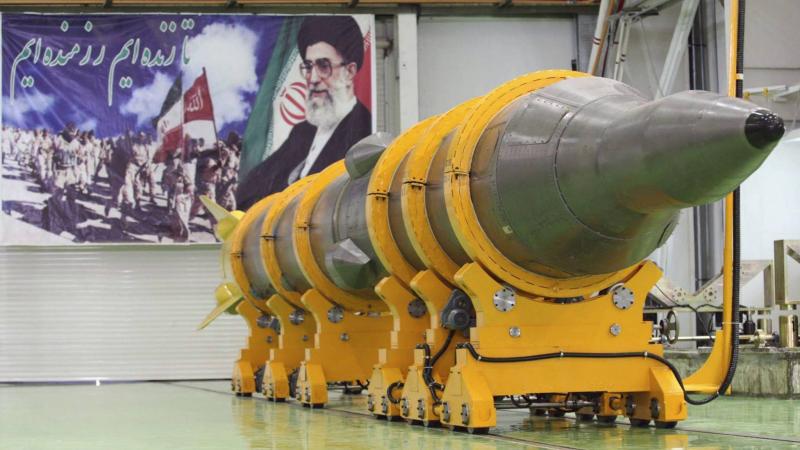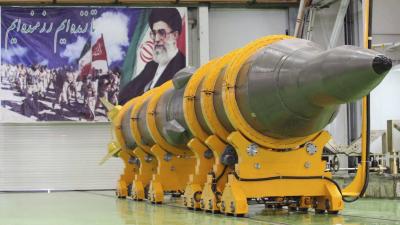Exclusive and confidential information received by "Iran International" has revealed that Tehran is actively working to complete its nuclear weapons program through the simultaneous implementation of a series of projects. According to three reliable and independent sources in Iran, Tehran has made structural changes in the Modern Defense Research Organization (SPND), while Mohammad Eslami continues as the head of the Iranian Atomic Energy Organization. Additionally, tests for producing nuclear bomb detonators have resumed, strengthening its nuclear weapons program.
The information indicates that Tehran has intensified its efforts to complete the nuclear weapons production cycle, including high-enriched uranium enrichment, production of nuclear detonators, and development of missiles capable of carrying nuclear warheads. U.S. intelligence agencies have consistently stated in their annual reports that "Iran is not seeking to develop nuclear weapons." However, this year's report, published last week, made a change by removing this statement and replacing it with: "Iran is continuing activities that enhance its position for producing nuclear weapons."
**Change in SPND Organization Structure**
Less than a month before the death of former Iranian President Ebrahim Raisi, a bill to establish the Modern Defense Research Organization (SPND) was approved by the Iranian parliament and became law. SPND, founded in 2010, was once affiliated with the Ministry of Defense, but under the newly approved and quickly issued law, it has become an independent organization. Mohsen Fakhrizadeh, a prominent figure in Iran's military nuclear program, was responsible for managing the organization before he was killed in December 2020 in the Absard area, with his murder attributed to the Israeli Mossad.
Under the new law, SPND is now an independent organization expected to enhance and continue Fakhrizadeh's achievements. Article Two of this law states that the new organization will enjoy financial independence and is not required to comply with the Financial Oversight Committee's laws, meaning it should not be held accountable for what it does with its allocated budget. Moreover, Paragraph Seven of this law stipulates that the management of SPND is based on laws issued by Iranian Supreme Leader Ali Khamenei.
**Importance of Establishing the Independent SPND Organization**
On January 20th, Iran launched a satellite named "Thuraya" into Earth's orbit using a solid-fuel three-stage satellite launcher called "Qaim-100," manufactured by the Iranian Revolutionary Guard Corps. A few days later, Germany, Britain, and France condemned this action in a joint statement, stating that the Qaim-100 missile, which uses solid fuel, employs Iranian long-range ballistic missile technology. Following the U.S. withdrawal from the nuclear agreement, Iran increased uranium enrichment to 60%, possessing a significant quantity of enriched uranium sufficient to build several nuclear bombs.
Manufacturing a nuclear weapon involves a complex cycle composed of three main aspects: high-level uranium enrichment, developing a detonator, and producing and testing missiles capable of carrying a nuclear warhead. Reports suggest that Tehran's efforts to launch satellites for the Revolutionary Guard aim to create missiles capable of carrying nuclear warheads. SPND continues to produce another key element of the nuclear program, maintaining efforts to create a detonator, which seems to have paused after the revelation of the "Amad Project" in 2003.
According to leaked documents, Tehran worked on developing neutron explosives that could be used in nuclear warheads at the Abadeh site in Fars Province after 2003, where Iran previously tested nuclear bomb detonators. Sources indicate that since 2011, SPND has begun a project called "Motafagh" at the Abadeh facility with one of the three main figures in the current Iranian military nuclear program, claiming Iran halted this program. Images published in 2018 indicated that in the two years leading up to this date, during which the nuclear agreement was implemented, Tehran was busy testing the detonator for a nuclear warhead.
**Who is Saeed Barji?**
Saeed Barji graduated from Malek Ashtar University, affiliated with the Ministry of Defense, and is an expert in explosives and metals at the "Shahid Karimi" group, part of SPND. He had been assisting Tehran's military nuclear program under the cover of a company named "Azar Afroz Saeed," which claimed to produce spherical tanks for the petrochemical industry. After the theft of Iranian nuclear documents by the Mossad, and when Tehran realized that the Abadeh site had been exposed, it immediately destroyed the site, though traces of it can still be seen in satellite images.
According to exclusive information, Saeed Barji recently resumed activities under the cover of a company named "Aravin Chemia Abzar" for petrochemical production. He transferred part of his shares in this company to the Advanced Defense Technology Units Development Center of SPND in September 2022. His partner, Aghabar Motlabi Zadeh, who was previously an advisor to the prominent figure in the Iranian military nuclear program, Mohsen Fakhrizadeh, and head of the Shahid Karimi group at SPND, has also taken similar actions. Both Saeed Barji and Aghabar Motlabi Zadeh are under U.S. sanctions and are currently implementing the detonator production program under the supervision of an Iranian Revolutionary Guard commander, Reza Mozafari Nia, who is noted to have been a former president of Malek Ashtar University and a former deputy of industrial research at the Ministry of Defense.
Importantly, Reza Mozafari Nia has been part of the Iranian regime's military nuclear program structure for many years. A knowledgeable source in the Iranian Ministry of Defense stated that the establishment of the independent SPND organization with an independent budget and without oversight is a crucial part of Iran's recent plan to develop nuclear weapons.
**Why Was Mohammad Eslami Retained?**
Earlier this week, the new Iranian president, Massoud Bezhakian, retained Mohammad Eslami, head of the Iranian Atomic Energy Organization, in his position. Eslami is a significant figure in Iran's military nuclear program and markedly differs from previous heads of the Atomic Energy Organization. He is considered another key player in Tehran's nuclear program, having been responsible for sensitive tasks between 1987 and 1989, including serving as deputy director of development plans at the Defense Industries Organization.
Eslami sent a team to Dubai on behalf of the Iranian regime to hold a secret meeting with Pakistani nuclear scientist Abdul Qadeer Khan, who later admitted to selling nuclear information and enrichment equipment to Iran. Eslami's prominent role is evident in diagrams from one of the stolen Iranian nuclear documents. As head of the Defense Industries Education and Research Institute, Eslami oversaw all aspects of Iran's military nuclear program, including the Amad project, which was implemented under Fakhrizadeh's supervision.
Eslami also served as deputy for industrial and research affairs at the Ministry of Defense for two years after the nuclear agreement. A source in the Ministry of Defense, along with another close to SPND, indicated that Eslami's retention was based on Khamenei's directive to maintain the new three-member team for the Iranian military nuclear program.
**Attempt to Change Iranian Deterrence Policy**
A Western diplomat told "Iran International" that questionable aspects of Iran's nuclear activities have raised concerns in the United States, Israel, and European countries. Following recent developments in the Middle East, especially the assassination of Ismail Haniyeh, head of Hamas's political bureau in Tehran, Iran's deterrence policy, which relied on its proxies in the region, has lost its effectiveness, and Khamenei and other regime leaders are fully aware of this fact. This reality may have prompted Iran to seek an alternative deterrent.
Mohammad Reza Sabaghian, the representative of Mehriz District in Yazd Province in the Iranian parliament, stated on the day Bezhakian submitted the proposed list of ministers to parliament, "What logic and law says that bullies should have nuclear weapons while Iran cannot?" He added, "We request that the Supreme National Security Council review the new situations and propose to the leader to pave the way for nuclear weapons development according to dynamic Islamic jurisprudence." This may be the regime's last and most dangerous shot under Khamenei.




